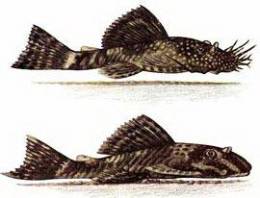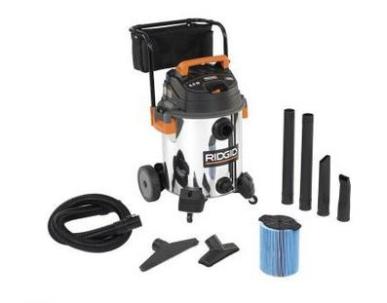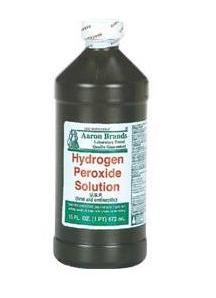Current Tank & Fish List with Spawning Report
Posted on Oct 12, 2014
Tank List:
(95) Tanks
(6) 55 gal [330 gallons]
(9) 20 gal long [180 gallons]
(29) 5.5 gal [159.5 gallons] of water
(50) 10 gal. [500 gallons](1) 30 gallon
(95) Tanks (1199.5 Gallons of Fish Tanks). I have included the common names of most fish in this posting, for those that don’t like using the scientific names. Over 1000 Gallons of Water with fish. Spawning report in Red Italics.
Livebearers:
Goodeids:
- Gold-breast Splitfin, Ilyodon furcidens – CN 2013; Spawning regularly
- Balsas Splitfin – Lennoni, Ilyodon lennoni – Meyer & Förster, 1983, TBA Auction (Nov, 2012) – Lost 2 young fish on hot day.
- Butterfly Goodeid, Ameca splendens – CN 2013; Spawning regularly
- Jeweled Splitfin, Xenotoca variata – Gone “2014” (purchased from Bubby Den in GA)
- Redtail Splitfin, Xenotoca eiseni – BS 2013, SKS Auction, BD 2014 –(1) small fry ; (2) females look pregnant
- Tequila, Splitfin, Zoogonecticus tequila – CN 2013; Not spawning at least no young yet!
- Black Prince Goodeid, Charcodon audax – Rkrzynowek, AQBD, Port Chester NY- (8) New Young
Splotched Skiffia, Skiffia multipunctata, John Noerpel, York Springs PA, Jan 2014 – All died after moving to bigger tankGolden Skiffia, Skiffia francesae sayula – jrpatter#79 – TBAS, Auction (April, 14, 2014) – 2nd batch that died?Zirahuén Allotoca, Allotoca meeki, Opopeo, GWG (Goodied working group) No old enough to spawn, last one died Oct 1, 2014- Limones splitfin, Ilyodon xantusi, (Hubbs and Turner, 1939), louiestank.com AQBD 2014, Collection Location being researched by seller? No location found! No old enough to spawn, still have 3
Mollies:
- Gilli Molly, Poecilia gilli, La Marguerita, Panama, Goliad Farms, Inc.Spawning regularly
- Mexican Molly, Poecilia mexicana, Campeche, Goliad Farms, Inc. Spawning regularly
- Salvatory Molly, Poecilia salvitoris, Honduras, Goliad Farms, Inc. Spawning regularly
- Wild Green Sailfin Molly, Poecilia petenensis, Goliad Farms, Inc. Spawning regularly
Poecilia butleri, Swampriveraquatics, AQBD, Miami FL 33135,only one fish left- Poecilia latipinna, Wild Caught, Lakeland FL 2013, one looks pregnant
- Wild Peurto Rican Guppys, Poecilia reticulata, Teddy123, Mayaguez Puerto Rico 00680-1504 Puerto Rico; Spawning regularly
- Domestic: Poecilia (Phasing out Domestic Mollies). Silver Sailfin Molly, Black Molly, Marble Molly (Melanistic)
Other Livebearers:
Guppy’s
- Domestic Guppy’s, Poecilia reticulata,
- Mosco Blacks, Variety, Mason, TBAS, March 2014, Spawning regularly
- Half Blacks Blue, Variety, HDARIN Spawning regularly
- Half Blacks Yellow, Variety, Pet World, Winter Haven, FL, Spawning regularly
- Pastel Blue ?, Pet World, Winter Haven, FL,
- Petco, Lakeland, FL,
- Half Red albino’s, Variety, TBAS Auction June 2014, Spawning regularly
- Ginga Ruba Guppies – BLDSHLDS Aug 2104, Now Breeding
Endler’s Guppy’s
- Endler’s Guppy’s, ? , Poecilia wingei ,
- Tiger Endler’s Guppy’s, Poecilia wingei, Livefins 2014, Spawning regularly, only 1 male left
Giardinius:
- Giardinius metalicus, SKS Meeting 2013, Spawning regularly
Limias:
- Limia Tiger sp., Mr Southwest, AQBD 2014; Spawning regularly
Cichlids:
- Convicts Black, Amatitlania nigrofasciata, 5 D’s Tropical’s; 2012; Spawning regularly
- Pink Convicts, Amatitlania nigrofasciata, 5 D’s Tropical’s; 2012; Spawning regularly
- Calico cichlids, Amatitlania nigrofasciata, ML, TBAS Auction (March 2014), 1st Spawn
- Kribs, Pelvicachromis pulcher, Pet Supermarket/ 5 D’s Tropical’s; 2012;
- Kribs, Both Red, Pelvicachromis pulcher, 5 D’s Tropical’s; 2014: Spawning regularly: (5) Young Fry
- Kribs, Both Albino, Pelvicachromis pulcher, 5 D’s Tropical’s; 2014: Spawning regularly (6) Young Fry
- Kribs, juveniles, Pelvicachromis pulcher – LAZ#97- TBAS Auction (April, 14, 2014); Haven’t Spawned yet
Apistogramma – Dwarf Cichlids
- Apistogramma macmasteri (A120 – A121) jrpatter, TBAS Auction (April, 14, 2014), Haven’t Spawned yet
- Apistogramma luelingi, SKS Auction May 2104; Haven’t Spawned yet
- Apistogramma cruzi, SKS Auction May 2104; Haven’t Spawned yet
- Apistogramma viejita, jrpatter, TBAS Auction (April, 14, 2014) Haven’t Spawned yet
- Apistogramma cacuatoides, SKS Auction May 2104; Haven’t Spawned yet
- Apistogramma norberti “Sunset”, jrpatter, TBAS Auction (April, 14, 2014) Haven’t Spawned yet
- German Blue Rams; HD TBAS Auction (April, 14, 2014) Haven’t Spawned yet
Catfish
- Florida Brown Bullhead catfish, Ameiurus nebulosus; only one fish
- Brown Bristlenose, Ancistrus cirrhosus, 5 D’s Tropical’s; 2012; spawning regularly, Many young available
- Albino Bristlenose, 5 D’s Tropical’s; 2012; spawning regularly, Many young available
- Long-fin Bristlenose, Chris Baez, 2013, , Many young available
- Blue Eyed Bristlenose, SKS Meeting, July 2-13 Arizona Breeder: Newly acquired Adult Male from HD; , No young available
- Super Red Bristlenose – Chuck MN (Oct 2104) 8 fish
Hoplosternum
- Hoplosternum littorale, Hoplo Cat – BLSHDS – August 2014 – Spawning – Will have young available For Sale
Corydoras
- Corydoras aeneus, Green/Bronze, 5 D’s Tropical’s; 2012: spawning regularly; No young available
- Corydoras aeneus, Albino Cory, 5 D’s Tropical’s; 2012;spawning regularly; , Many young available
- Corydoras aeneus, Red Laser Cory, Hank Darin; 2014; not spawning
- Corydoras paleatus, Peppered Cory, , First spawn this year
- Corydoras paleatus, Albino Peppered Cory, Long-Fin, TBAS Auction Sept 2014
- Corydoras paleatus, Long-fin Peppered Cory, TBAS Auction Sept 2014
- Corydoras trilineatus, First spawn this year; No young available
- Corydoras melini, Not spawning
- Corydoras panda, Panda Cory, (short-tail), Spawned several times no young yet
- Corydoras panda, Panda Cory, (long-tail) spawned once!Removed eggs no viable young produced.
- Corydoras delphi, (2) Marine Warehouse, Tampa, FL, Fish Not spawning
- Corydoras rabauti, (2) 5 D’s Tropical’s, Not spawning
- Corydoras agassizii , Marine Warehouse, Tampa, FL, Not spawning
- Corydoras gomezi, (2) Marine Warehouse, Tampa, FL, Confused with C. agassizii, Not spawning
- Corydoras sterbai, Acquired Oct-2014, Walter Kraus, aquariumstock@yahoo.com, Spawned Once
- Corydoras habrosus, Marine Warehouse, Tampa, FL, not spawning?
- Corydoras leucomelas – 4 Fish 4 You, Braedonton, FL, Not spawning
- Corydoras elegans – Nolan’s Aquarium, Lakeland, FL New; Not spawning
- Corydoras pygmaeus – TBAS Auction Sept 2014, New; Not spawning
- Corydoras venezuelanus – (6) Black Cory’s, Bruce Yates <brucewanda@bellsouth.net, New; Not spawning
Aspidoras
- Aspidoras albator, Originals acquired from Chris Baez, new fish acquired from Hank Darin; spawning regularly
- Aspidoras spilotus, Originals acquired from Chris Baez, spawning regularly: some fish available
Killifish:
- Heterandria formosa, Least Kiliifish, Wild Caught, Zephyrhills, FL 2012-2014; Spawning regularly
- Jordanella floridae, Florida Flagfish, Wild Caught, Zephyrhills, FL 2014; Spawning
- Fundulus chrysotus, Golden Top-minnow, Wild Caught, Zephyrhills, FL 2014; (1) spawn – 6 Young
- Lucania goodei, Blue-fin Killifish, Wild Caught, Lakeland, FL, 2013; New fish acquired from BShlds; Not spawning






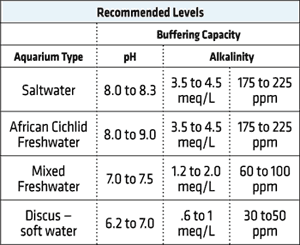



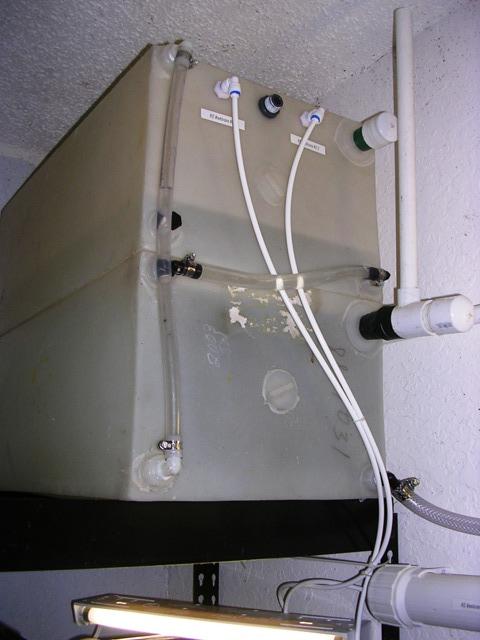












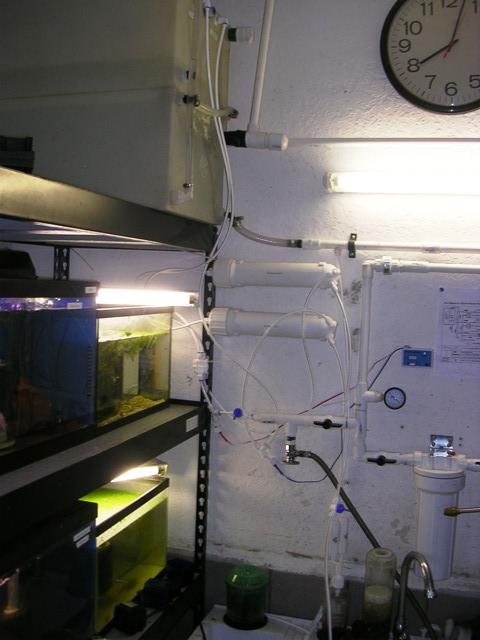

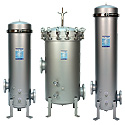

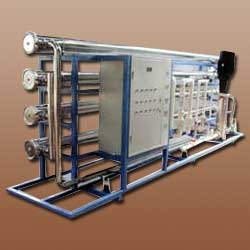
![HD MilliQ Integral Profil QPOD Millipak-16[123337-ALL]](https://ronsaquatics.wordpress.com/wp-content/uploads/2014/06/hd-milliq-integral-profil-qpod-millipak-16123337-all.jpg?w=500&h=500)



